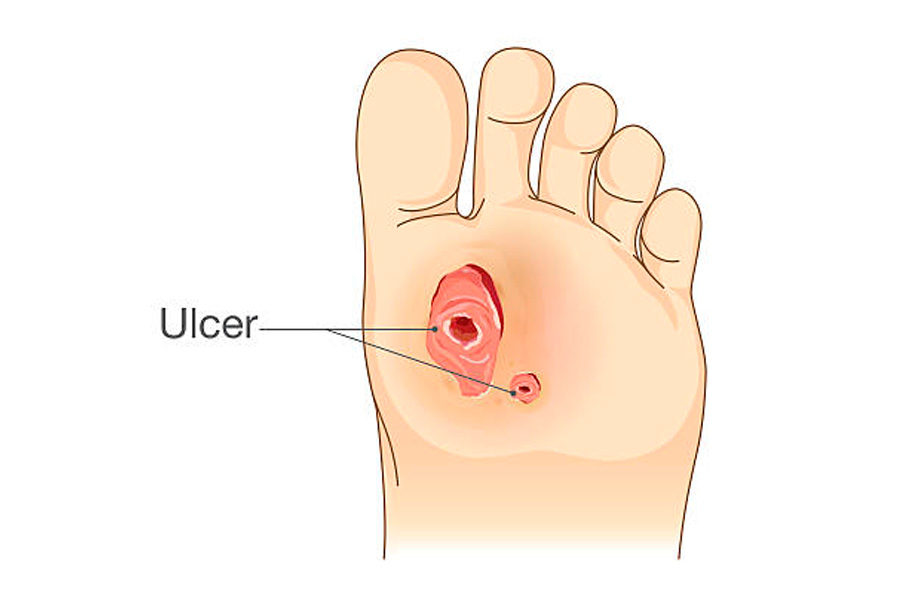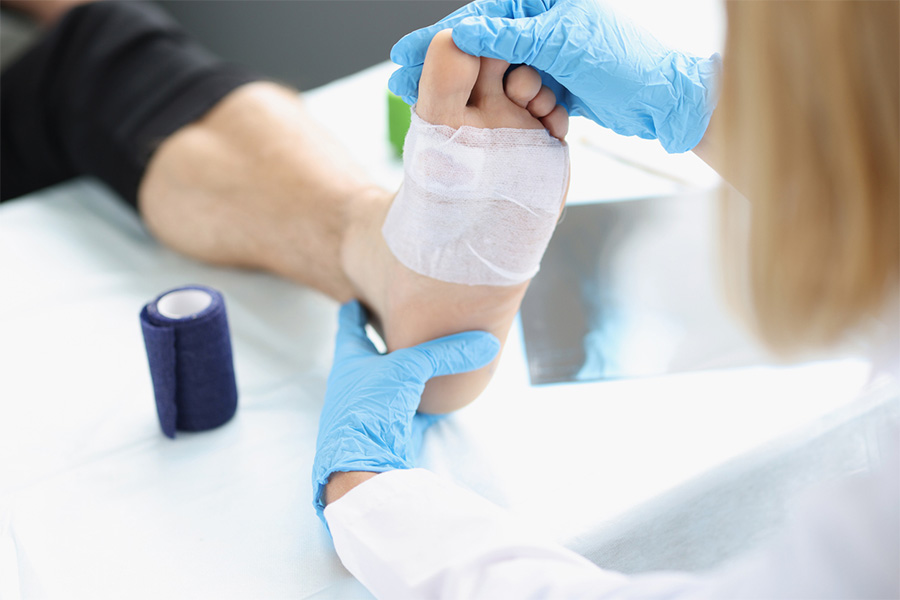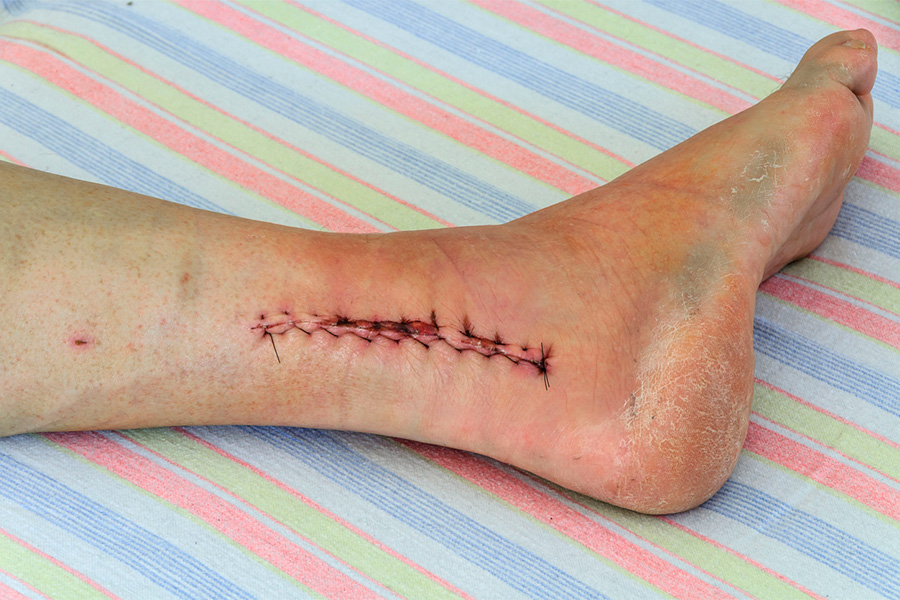A fracture in the foot is a common injury that can lead to symptoms of pain and limited function. It can result from a variety of factors such as a fall, overuse, dropping something heavy on the foot, a sports-related injury, auto accident, or simply from tripping over. Recovery may take time depending on the type and location of the fracture and whether surgery is required. Rehabilitation is key to a successful recovery.
Symptoms of a Fractured Foot
A foot fracture can vary in severity, ranging from a very small hairline crack to a break that pierces the skin or results in several broken pieces. A fracture in the foot may not always be obvious, and symptoms can be similar to that of a bad sprain. You may, however, experience the following symptoms:
- Immediate pain or a throbbing sensation
- Swelling
- Tenderness
- Bruising
- Pain that increases when using the foot
- Difficulty weight bearing
- An obvious deformity
A fractured foot requires immediate medical treatment. If you have a suspected fracture, seek medical attention as soon as possible to get the correct diagnosis and treatment. Delaying treatment can result in complications.
Diagnosis and Treatment
Treatment for a foot fracture depends on which bone has been broken, the complexity of the fracture, and whether the bones remain aligned. To diagnose a fracture, your physician will carry out a physical examination and request imaging tests, such as an X-ray, bone scan, MRI, or CT scan, to assess the type and severity of the fracture.
Minor fractures typically do not require surgery. Treatments can include rest, pain and anti-inflammatory medication, and immobilization, such as wearing a cast, splint, removable brace, or rigid shoe. For more complex foot fractures, surgery may be required to stabilize or realign the bones to ensure they heal correctly. Your doctor may need to manipulate the bones back into position if you have a displaced fracture, a process known as a reduction. Surgical hardware such as screws and plates may also be required to hold the bones together while they heal. If a bone has been severely damaged or broken into many pieces, a bone graft may be required to fill in any gaps.
Recovery and Rehabilitation
Recovery can vary depending on the complexity of the break and whether fracture repair surgery is necessary. A minor break may take up to eight weeks to heal, but fractures requiring surgery will often take much longer. Following surgery, a protective cast or splint is usually worn, and you won’t be able to put any weight on your foot while the bone heals. Using a walking aid or crutches may be required when you first begin walking.
For a successful recovery, it is very important to follow your doctor’s advice and rest the foot to allow adequate healing time. Returning to sports or activities too soon can put more stress on the fracture and delay healing. It can also cause further damage and re-injury to the bones, which may lead to additional surgery. You should attend all follow-up appointments with your physician following treatment to ensure the fracture is healing correctly and that recovery is a success.
Physical Therapy
Rehabilitation is an important part of recovery. A physical therapist can help you learn how to use a walking aid, such as crutches, correctly if required following surgery. They will advise you of your weight-bearing restrictions and how to move about successfully with these restrictions.
Your physical therapist will be able to help you regain strength, functional mobility, and normal range of motion following a fracture. Physical therapy is usually recommended after the cast has been removed and the bone has healed. Therapy aims to loosen up the muscles and ligaments in the foot, which may have become stiff due to lack of use.
The main goal of physical therapy is to improve motion, strength, function, and mobility, and to reduce the risk of future injuries. It can also help to reduce pain, speed up recovery, and build up endurance, allowing you to resume your normal activities as soon as it is safe to do so. Your therapist will customize an exercise plan for you that aims to improve your flexibility and strength gradually as your foot heals.
Comprehensive Foot Fracture Care in Cincinnati, Ohio
If you have a suspected foot fracture, consult with the experts at Cincinnati Foot and Ankle Care. Our experienced podiatrists provide personalized care and state-of-the-art technology to treat fractures and other conditions affecting the foot and ankle.
If you would like to find out more about the services we provide, call us today at the location nearest to you or use our online form to request a consultation.





